Ilya Chamberlain, the Renaissance Man of Cozumel
Copyright 2016, Ric Hajovsky
I knew a little about the man who started the Mayaluum Hotel on Cozumel back in 1956, but the operative word here is little. Reading the blurbs in various guide books about Cozumel and in the “history” sections on local websites, all I was told was that he was an “American born in England of Russian parents” and that he was a symphony conductor before moving to Cozumel and opening his hotel on the south corner of Calle 8 and Av. Melgar. I heard through the “grapevine” that he also had a nightclub and restaurant attached to the hotel and that he was a good cook, but that was it.
Since this man played such an important part in getting the tourist industry off the ground on Cozumel, I thought I’d like to know a little more about him. By searching out newspaper articles of the day, old letters, ads, archived documents and published interviews with the guy, what I found was that he was much, much more interesting that I had been led to believe.
Ilya L. Chamberlain was born on August 2, 1915, in London, England to parents holding Russian passports, but his father was a relative of famous British politicians Austen and Neville Chamberlain and traces his roots back to the 1830s in Birmingham England. Ilya was a violin prodigy; he played at age eight in concerts conducted by Sir John Barbirolli and in European venues with other famous conductors. Ilya later studied philosophy at the Sorbonne in Paris and taught at Oxford University. He spoke Russian, English, Spanish, French, Italian, German, Japanese, and Portuguese.
In his mid-20’s, Ilya worked as assistant conductor at La Scala di Milano opera house in Italy during Mussolini’s time in power as well as conducting symphony orchestras in other countries. Later, he became a naturalized American citizen and worked as a press agent in New York. In 1939 he was working for Sonnemann Agency in New York, where he was tasked by the Brazilian Coffee Import Bureau to design and implement a campaign to get Americans to drink more coffee. In March of 1949, Ilya traveled back to Italy to visit his friend, the exiled American mobster Lucky Luciano, and was injured in an automobile accident during his stay. This visit was documented in a Life Magazine article that same year.
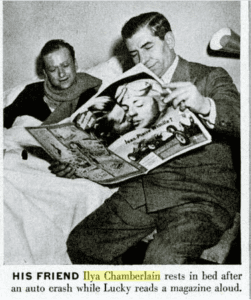
Returning to the US, Ilya moved to Austin, Texas and mounted art exhibitions featuring Mexican artists in New Orleans and Washington, D.C., among several other US cities.
In 1955, Ilya read the glowing article about Cozumel that Richard Humphries wrote for Holiday Magazine that year and then went to the island to see for himself on a short two-day visit. At the time, the only available lodgings were rooms in private homes and the 18-room Hotel Playa (today’s Museo de la Isla), which was still “mothballed” after it closed due to lack of business soon after it was built in 1938. Sensing an opportunity, Ilya went back to the States and gathered up enough operating capital to launch a new venture on the island. Returning the same year, he began remodeling two rental houses next door to each other on Avenida Melgar, which he opened as the ten-room Hotel Mayaluum in 1956. The paperwork may have been a little “iffy;” the new company, Mayaluum, S. A., listed its manager as Alberto Molina (who lived in Merida) and its sub-manager as Reyes Garcia. In reality, Ilya and his wife ran the whole shebang. Ilya’s wife was Mary Helen Byrnes, better known by her nicknames Jan or Janna. She was a fashion designer in New York, born in 1927 in Michigan. She is still alive today, living in Silver Spring, MD.
Shortly after the inauguration of the Hotel Mayaluum, Ilya opened an adjoining nightclub named the Tumben Mayaluum. Local musicians as well as bands booked from Mexico City played live for the guests. Manhattans, Gibsons, and martinis were the order of the day. The hotel’s restaurant soon became well known for its Italian and French dishes that Ilya and his wife prepared.
The new hotel attracted jet-setters and movers-and-shakers from around the world, all returning home with great tales to tell about the oasis of culture, music, chess, and haute-cuisine they found on the beautiful tropical island of Cozumel. Along with these word-of-mouth recommendations, Ilya used his experience as a promoter and press agent to help put Cozumel on the map, pulling strings and calling in favors to get articles published about the island in newspapers all around the US.
Soon after his Mayaluum proved successful, others built hotels on the island; The Hotel Playa was resurrected and renovated by a Joaquin/Barbachano partnership in 1957. Cabañas Del Caribe (torn down recently to make room for the new Westin) was opened by the Gonzalez family in 1958 and another joint venture by the Barbachano and Joaquin families, the Playa Azul, initially consisting of just six bungalows, opened the same year. The Barbachano family’s hotel, located right across the street from the Mayaluum, was inaugurated in December 20, 1959 as the Hotel Islander, but it was not operational until 1961 and by then had changed its name to Hotel Caribe Isleño. In December of 1962, Fernando Barbachano opened the Hotel Cozumel Caribe, now only functioning as a beach club/restaurant with just a few of the old rooms in the tower leased out as apartments.
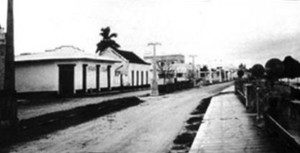
In 1958, the then 21-year-old explorer and future author Michel Peissel was a guest of Ilya’s at Hotel Mayaluum. It was during Peissel’s solitary walk down the entire Quintana Roo shoreline (this was prior to any roads existing on the coast) that the young man made a short detour to visit Cozumel. In his 1962 book, The Lost World of Quintana Roo, Peissel mentions that he had martinis with Ilya at his nightclub and stayed at his hotel where he had a nice conversation in French with the restauranteur/hotelier.
In 1959, Ilya began recruiting artists to work for him on the island, where he would provide them with food, lodging, and materials for them to be able to work on their art without worrying about income. This new project was reported on in an article that was published in The Eagle of Bryan, Texas, in November of 1960:
Mayan Art for Museum on Cozumel
An unusual art center is being built in as unlikely as place as one could expect—the remote tropical island of Cozumel, called the Hawaii of the Caribbean. Founder is Ilya Chamberlain, an American born in London of Russian parents, now a Mexican resident. Chamberlain and his wife, Janne, came to Cozumel for a two-day vacation five years ago, promptly fell in love with the quiet, isolated, Mayan-inhabited island off eastern Yucatan. With a few hundred dollars they managed to scrape up they opened a small hotel which has prospered. Now he wants to open an art center and is well on his way to realizing his dream. The project has the blessing of state Gov. Aaron Merino Fernandez, plans have been drawn up, and most of the $20,000 he needs is in sight. The Mayan-type building, typical of the area, was designed by Kenneth Frizzell who worked on plans for the U. S Pavilion at the Brussels World Fair. The center is mainly for Mexican artists, poor and struggling but with talent, particularly those living in Yucatan, Quintana Roo and Cozumel. Chamberlain says there is a surprising amount of talent, going to waste because artists can’t even buy paints and canvas. He plans to furnish what they need, even house and feed them if necessary. Instructors will be recognized Mexican artists. Courses will include not only painting but sculpturing, lithographing, woodcutting, metal engraving. American and other foreign artists will be welcome, Chamberlain says. And the isolated island is a dream spot for them to work in. The hotel project on Cozumel was Chamberlain’s first venture into this field. He is proud that “we built the first bathroom on the island.” But art is still his first love, and his ar
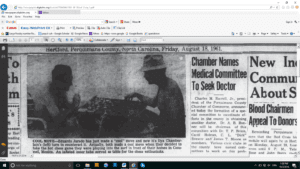
t center is taking up most of his time — and money — these days. “Cozumel in the time of the Mayans was the Athens of the New World,” he says. “It may regain its prestige in part.”
Ilya’s wife was the art director of this new endeavor, which they named Instituto de Arte de Cozumel, or IDEAC, the same name as their cable address on Cozumel
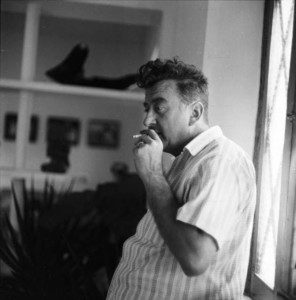
In April of 1960, the following article went out over the Associated Press wires:
MEXICAN SPOT HAS THE CHARM OF BALI HAI. Cozumel, Mexico (AP) — If you want to go off almost to the end of nowhere, and still remain in a civilized atmosphere, you might try this island of Cozumel. Twenty-five miles long and 15 across at the widest point, it is located 12 miles east of the Yucatan peninsula and is part of the Mexican territory of Quintana Roo. Historically, it once was one of the religious sanctuaries of the ancient and highly civilized Mayan Indians, and was a stepping stone of Cortez in his conquest of Mexico for the Spaniards. Of the islands 3,000 inhabitants about 2,500 live in this town–also Cozumel–on the eastern coast. This is a quiet and peaceful place, with little activity except or bursting growth of vegetation. There are no nightclubs, and only one movie theater which operates two nights a week.
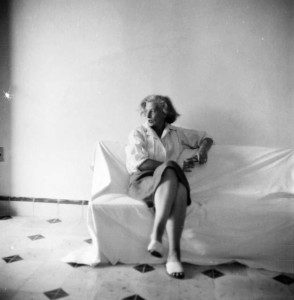
It is a busy day when two cars or trucks pass on the principal street. Some have taken advantage of the island’s tranquility to come here to read, write, or just rest. Others fish or skin-dive in the crystal waters. The island has not been overrun by tourists, and some residents say they don’t want it to. Still, they welcome well-behaved visitors who want to share the island’s charm and friendliness. The island is almost crimeless. The only way to get here comfortably is by private plane or yacht, or a daily cargo-passenger plane from Merida, capital of the state of Yucatan. There are two hotels, the Playa, a converted government building, and the small Mayaluum with garden of lush tropical plants. The food, especially at the Mayluum, is good. There, two odd travelers, Ilya Chamberlain and his wife, Janne, can whip up plain or exotic dishes with equal knack. Those wishing to fish or skin-dive should carry their own equipment. There is no adequate rental service at present. Boats now available for fishing are not comfortable for catching big ones. They are converted sailboats with tillers, leaving no room for swivel chairs in the rear. Skin-divers, besides enjoying the underwater beauty, can spear fish and giant crayfish which hang round the coral reefs. The sun is hot, but a balmy breeze constantly flows across the land, and the nights are comfortable.
Cozumel only had 7,808 people living on it at the time. In Ilya’s ad in a 1960 edition of Saturday Review, the hotel’s address was listed simply as “Hotel Mayaluum, Cozumel, Mexico.” The magazine Canadian Motorist said: “Isla de Cozumel isn’t the ideal spot for night clubbing, but San Miguel does have its share: One to be exact. And the Tumben Maya Luum (New Maya Land) is it.” To get to Cozumel, you had to fly TAMSA’s DC-3 on Tuesday, Thursday or Saturday from Merida. The 80 minute flight was a whopping $22 usd round trip.
On June 11, 1961, another article about Ilya’s art institute appeared in the Mexico City newspaper Excelsior: “Ilya Chamberlain y la pintura en Cozumel,” written by Marcela Del Río Reyes. Later, in November of that same year, Ilya wrote a symphony featuring the oboe, which was performed at an art “happening” in Mexico City and was also reported on in the Excelsior newspaper:
“On November 30, 1961 a group headed by Mathias Goeritz and self-styled as “Los Hartos” (the fed-up ones) joined together to make an exhibition in the Gallery Antonio Souza in Mexico City. Everything happened in just one night, Los Hartos, included a hen and, unforgettably, an egg that Jackson Pollock smashed on some anonymous wall. Consuelo Abascal (hama de casa), participated in that first and last dinner of Los Hartos with a family meal; Benign Alvarado (hobrero), with a carved stone; Octavio Asta (haprendiz, a 7-year-old), with a painting; Francisco Ávalos (hindustrial), with a set of blown glass; José Luis Cuevas (hilustrador), with an expressive vision; Pedro Friedeberg (harquitecto), with a couple of tables; Mathias Goeritz (Hintelectual), with a significant message; Kati Horna (hobjetivista), with a portrait; Innocence the hen (Have), with an egg valued at seventy cents. Agripina Rodríguez (hagricultor), with lots of fruit. Consuelo R. Soto Franco played variations of the s ymphony “La Harta” for the hoboe, composed by Ilya Chamberlain.”
This exhibition was resurrected and renamed “Los Hartos otra Vez” (The Fed-up Ones, Once More), when it was mounted in 2013 in the Museo Experimental El Eco, in Mexico City. It was a collection of photos and documents of the “Los Hartos” art group, along with a performance of Ilya’s symphony. This exhibition was also included in the exhibition “Challenge to stability. Artistic processes in Mexico, 1952-1967″ at the University Museum of contemporary art, or MUAC.
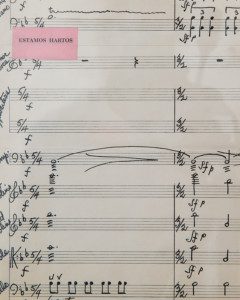
In late 1961, disaster struck. Arsonists burned down Ilya’s art institute on the north corner of the Malecon and Calle 6, just across the street from the old Hotel Playa (today’s Museo de la Isla). The following article was published on December of that year by the Odesa American, in Odessa, Texas:
Rebuilding Set At Art Gallery. Displeased by the excessive delays in rebuilding his burned-out art gallery on the Isle of Cozumel, Ilya Chamberlain doesn’t foresee reopening in the immediate future. The unique gallery, largest in Mexico, was set afire by two drunks several days ago who flipped lighted cigarettes on the palm-thatched roof. Authorities arrested the pair and are holding them for trial on charges of arson. Some 1,000 originals, including 120 oil paintings, valued at more than $100,000 went up in flames. Thousands of dollars of sculptures also were destroyed. The biggest portion of the works of art had been sent to the little island, 15 miles off the coast of Yucatan in the Caribbean, for the inauguration that was scheduled for this month. President Adolfo Lopez Mateos was to attend the ceremonies and officially open the gallery.
The two arsonists died soon after they were released, in two independent accidents, a fact that started tongues wagging on Cozumel. The rumor running through the island was that Ilya called in a favor from his old Mob buddies.
Although the hotel and nightclub continued to be successful and remained open for a few more years, the arson attack on the art institute took the wind out of his sails and Ilya began to focus on other projects away from Cozumel. On November 4, 1963, he directed Vivienne Burgess, Olive McFarland, and Emrys James, in the first London performance of Howard Koch’s play “The Albatross” at the Theater Royal, in Stratford. The stage scenery was created by Alan Tagg and the play produced by Giles Gilbery and Richard Krakeur. That same year, Ilya planned to film a movie entitled “The Looking Glass” in Naples, Italy and met with Hollywood moguls in the US in regards to production.
Once more taking a new direction, on Dec 11, 1970, Ilya incorporated The Chamberlain Company in Florida. With himself as president, James Gordon Williams, Jr., vice president of research, and Roy Ellis-Brown, director of electronic and mechanical engineering, Ilya used his years of adapting food recipes for large-volume commercial production and in solving physical and chemical problems involved in those large-sized recipes to launch the new business. The Chamberlain Company was soon merged into Noca Foods, of Pompano Beach, Florida. Four years later, Ilya retired from the business, receiving substantial annual royalties from his patents on a soybean fermentation process he developed during his time with the company.
With those royalties, Ilya went to work in a Volvo dealership in Washington, D.C., where he specialized in selling autos to diplomats. Volvo of Washington at 4800 Wisconsin Avenue was soon the “in” place to go and play chess with Ilya and other chess masters, like showroom manager Lenny Schnurmacher. In March, 1978, Ilya began organizing a world championship chess tournament at the Volvo dealership, offering a $15,000 purse out of his own pocket. Chamberlain’s top prize of $5,000 was considerably higher than those given in most international tournaments of the time and each of the participating players received a $2,000 appearance fee plus all expenses.
In May of 1978, Lubomir Kavalek, rated as the strongest chess player in the United States and one of the twenty-five strongest in the world, faced Ulf Anderson, Sweden’s strongest player, at the event produced by Chamberlain. The match was a huge success, and Ilya immediately began laying the foundation for a second tournament, raising over $200,000 in corporate sponsorships for an April 1979 match at his Volvo dealership. For that event, he invited world chess champions Anatoly Karpov, Victor Korchnoi, Bobby Fischer, Boris Spassky, Lubomir Kavalek, Bent Larsen, Lajos Portisch and Henrique Mecking.
On January 29, 1995, Ilya Chamberlain died in Rockville, Maryland. His lifetime achievements were many and varied, and some of them continue to be in the public eye. On November 12, 2014 Ilya Chamberlain’s work “La Harta” was played once more in the Museo Nacional Centro de Arte Reina Sofia, in Mexico City. The moves on the chess games that took place at his Volvo dealership have been published and are still used as a reference for chess players to this day. And, websites and guidebooks still mention the contributions he made to the Cozumel tourist industry, just usually not in as much detail!
Ric Hajovsky’s newest book, The True History of Cozumel, is available in English as a paperback or Kindle eBook on Amazon.com
Ilya Chamberlain, el hombre versátil de Cozumel
Copyright 2016, Ric Hajovsky
Sabía muy poco acerca del hombre que inició el hotel Mayaluum en Cozumel en el año 1956; aquí la palabra clave es poco. Habiendo leído breves explicaciones en diversas guías turísticas sobre Cozumel y las secciones “históricas” en sitios web locales, todo lo que yo sabía es que éste era “estadounidense nacido en Inglaterra, hijo de padres rusos”; que fue director de una orquesta sinfónica antes de mudarse a Cozumel y abrir su hotel en la esquina de la Calle 8 y Avenida Melgar. Había escuchado el rumor que también fue propietario de un centro nocturno y restaurante anexos al hotel, y que era buen cocinero. Pero eso era todo
Ya que este hombre jugó un papel tan importante en el despegue de la industria turística de Cozumel, quise saber más de él. A través de artículos periodísticos de la época, de viejas cartas, anuncios, documentos archivados y publicaciones de entrevistas que le fueran hechas al tipo, lo que encontré era mucho, mucho más interesante de lo que me habían hecho creer.
Ilya L. Chamberlain nació el 2 de agosto de 1915 en Londres, Inglaterra; de padres con pasaporte ruso, pero su padre era pariente de Austen y Chamberlain, famosos políticos británicos, y sus raíces se remontan hasta la década de 1830 en Birmingham, Inglaterra. Ilya era un prodigio en el violín. A los ocho años de edad interpretó conciertos dirigidos por Sir John Barbirolli y se presentó en escenarios europeos con muchos otros directores famosos. Posteriormente, Ilya estudio filosofía en la Sorbona en París e impartió clases en la Universidad de Oxford. Hablaba ruso, inglés, español, francés, italiano, alemán, japonés y portugués.
Durante la época que Mussolini estuvo en el poder, con veintitantos años de edad Ilyia trabajó como director asistente en teatro de ópera de La Scala de Milán en Italia y también dirigió sinfónicas en otros países. Posteriormente se naturalizó ciudadano estadounidense y trabajó como agente de prensa en Nueva York. En 1939 mientras laboraba para la agencia Sonneman en Nueva York, la oficina de importación de café brasileño le encomendó que diseñara e implementara una campaña para fomentar que los estadounidenses bebieran más café. Para Marzo de 1949 Ilya viajó de regreso a Italia para visitar a su amigo Lucky Luciano, mafioso estadounidense en el exilio, y durante su estancia se lesionó en un accidente automovilístico. Ese mismo año la revista Life documento la visita en un artículo.

Al regresar a los E.U.A., Ilya se mudó a Austin, Texas y monto diversas exhibiciones de arte presentando artistas mexicanos en Nueva Orleans y en Washington, D.C., además de otras ciudades en los E.U.A.
En el año 1955 Ilya leyó el brillante artículo sobre Cozumel que ese año escribiera Richard Humphries para la revista Holiday; luego, Ilya hizo una corta visita de dos días a la Isla. En aquel entonces el único alojamiento disponible era en casas particulares y en el Hotel Playa (hoy día el Museo de la Isla) con 18 habitaciones y que aún estaba “inhabilitado” después de cerrar en virtud de falta de negocio poco después de su construcción en 1938. Detectando una oportunidad, Ilya regresó a los EUA y reunió suficiente capital para lanzar un nuevo proyecto en la Isla. Al regresar, ese mismo año comenzó a remodelar dos casas de alquiler colindantes en Avenida Melgar, las cuales abrió al público en 1956 como el hotel Mayaluum con diez habitaciones. Posiblemente la documentación haya estado algo confusa. La nueva empresa, Mayaluum, S.A. mostraba a Alberto Molina (quien vivía en Mérida) como gerente y a Reyes García como subgerente. En realidad todo el tinglado lo manejaban Ilya y su esposa. Mary Helen Byrnes era la esposa de Ilya; y era mejor conocida por sus apodos como Jan o Janna. Era diseñadora de modas en Nueva York y había nacido en Michigan en el año 1927. Aún sigue viva y reside en Silver Spring, Maryland.
Poco después de la inauguración del hotel Mayaluum, anexo a éste Ilya abrió un club nocturno que llamó Tumben Mayaluum. Los músicos locales así como bandas de la Ciudad de México interpretaban música en vivo para los huéspedes. Cocteles como Manhattans, Gibsons y Martinis estaban a la orden del día. En poco tiempo el restaurante del hotel se volvió famoso por sus platillos estilo italiano y francés que Ilya y su esposa preparaban.
El nuevo hotel atrajo viajeros del jet-set e influyentes promotores de todo el mundo los cuales regresaban a casa con grandes historias que contar acerca del oasis de cultura, música, ajedrez y alta cocina que descubrieron en la bella isla tropical de Cozumel. Junto con estas recomendaciones de boca en boca, Ilya echó mano de su experiencia como promotor y agente de prensa ayudando a colocar a Cozumel en el mapa; movió hilos y solicitó favores para que periódicos en los E.U.A. publicaran artículos sobre la Isla.
Poco tiempo después de que su Mayaluum probara ser un éxito, otros construyeron hoteles en la Isla. En 1957 la alianza Joaquín – Barbachano resucitó y renovó el hotel Playa. La familia González abrió en 1958 el Cabañas del Caribe (demolido para la construcción del nuevo Westin); y en otra alianza de las familias Barbachano y Joaquín, ese mismo año abrió el hotel Playa Azul que inicialmente consistía de seis búngalos. El hotel de la familia Barbachano, ubicado frente al Mayaluum, fue inaugurado el 20 de diciembre de 1959 bajo el nombre de hotel Isleño, pero no comenzó sus operaciones sino hasta 1961 bajo el nombre de hotel Caribe Isleño. En Diciembre de 1962, Fernando Barbachano abrió el hotel Cozumel Caribe, que actualmente sólo funciona como club de playa/restaurante y del cual algunas de las antiguas habitaciones en la torre se alquilan como departamentos.

En 1958, Michel Peissel, el entonces explorador de 21 años de edad y futuro escritor, se hospedó en el hotel Mayaluum de Ilya. Durante un recorrido solitario a lo largo de toda la costa de Quintana Roo (esto fue antes de que existieran caminos en la costa), el joven Peissel hizo un pequeño desvío hacia Cozumel. En su libro de 1962 The Lost World of Quintana Roo, Peissel menciona haber tomado Maritinis con Ilya en su centro nocturno, y haberse hospedado en su hotel donde sostuvo una agradable conversación en francés con el restaurantero/hotelero.
Para el año 1959 Ilya comenzó a contratar artistas para que trabajaran con él en la Isla. Él les suministraría alimento, hospedaje y materiales para que trabajaran en sus obras artísticas sin preocuparse de los ingresos. Se hizo mención de este nuevo proyecto en un artículo publicado en The Eagle de Bryan, Texas en Noviembre de 1960:
Arte maya para museo en Cozumel
Un peculiar centro de arte se construye en un sitio tan atípico como uno pudiera suponer: la remota isla tropical de Cozumel, llamada Hawái del Caribe. El fundador es Ilya Chamberlain, un estadounidense nacido en Londres e hijo de padres rusos y, ahora, es residente mexicano. Chamberlain y su esposa Janne, llegaron a Cozumel hace cinco años para tomar un par de días de vacaciones. De inmediato se enamoraron de la calmada y aislada isla habitada por los mayas, ubicada al oriente de Yucatán. Con unos cientos de dólares que lograron reunir, abrieron un pequeño hotel que ha tenido éxito. Ahora él desea abrir un centro de arte y va por buen camino para realizar su sueño. El proyecto cuenta con la aprobación del gobernador del estado, Aarón Merino Fernández. Los planos ya han sido elaborados y ya se vislumbra gran parte de los $20,000 que requiere para el proyecto. El edificio estilo maya, típico de la zona, fue diseñado por Kenneth Frizzell quien elaboró los planos del pabellón de los E.U.A. en la Feria Mundial de Bruselas. El centro está destinado principalmente para artistas mexicanos pobres, que luchan por salir adelante pero que tienen talento; en especial quienes viven en Yucatán, Quintana Roo y Cozumel. Chamberlain menciona que sorprendentemente hay una gran cantidad de talento que se desaprovecha ya que los artistas no pueden siquiera comprar las pinturas y los lienzos. Él planea darles lo que necesitan; incluso, de ser necesario, casa y comida. Los instructores serán artistas mexicanos reconocidos. Los cursos no sólo abarcarán pintura sino también escultura, litografía, xilografía, grabado sobre metal. Chamberlain indica que son bienvenidos artistas estadounidenses y otros artistas extranjeros; y la Isla es el punto de ensueño para que ellos puedan trabajar. El proyecto del hotel en Cozumel fue el primero de Chamberlain en este campo. Esta orgulloso por que “construimos el primer baño en la Isla”. Pero el arte sigue siendo su primer amor, y éstos días el centro de arte está ocupando la mayor parte de su tiempo, y dinero. “En la época de los mayas, Cozumel era la Atenas del Nuevo Mundo”, indica. “Es posible que en parte recupere su prestigio”.
La esposa de Ilya era la directora de este proyecto al cual llamaron Instituto de Arte de Cozumel, o IDEAC, el mismo nombre que su dirección de telegramas en Cozumel.

En Abril de 1960 a través de la Associated Press circuló la siguiente publicación:
UN LUGAR EN MÉXICO TIENE EL ENCANTO DE BALI HAI. Cozumel, México (AP). Si usted desea ir casi al final de la nada y aún permanecer en una atmósfera civilizada, querrá probar esta isla de Cozumel. Con veinticinco millas de largo y 15 de ancho, se ubica a 12 millas al este de la península de Yucatán y es parte del territorio mexicano de Quintana Roo. En su pasado histórico alguna vez fue un santuario de los antiguos y altamente civilizados indios maya, y fue camino de paso de Cortes en su conquista de México para los españoles. De los 3,000 habitantes de la isla, 2,500 viven en este pueblo, que también es Cozumel, en la costa oriental. Este es un sitio tranquilo y pacífico con poca actividad salvo por el abundante desarrollo de la vegetación. No hay clubes nocturnos, y sólo existe una sala de cine que opera dos noches a la semana. Un día ajetreado es aquel cuando dos automóviles o camiones transitan por la calle principal. Algunos se han aprovechado de la tranquilidad de la Isla y vienen a leer, escribir o sólo descansar. Otros van de pesca o bucean en las aguas cristalinas. La isla no está invadida de turistas, y algunos habitantes indican que no quieren que sea así. Sin embargo, dan la bienvenida a visitantes bien portados que desean compartir el encanto de

la Isla y la amabilidad. Casi no existe la delincuencia en la Isla. La única manera de llegar cómodamente es por medio de avión privado o yate, o del avión de carga-pasajeros procedente de Mérida, capital del estado de Yucatán. Hay dos hoteles; el Playa, un inmueble de gobierno que fue transformado, y el pequeño Mayaluum, con exuberantes plantas tropicales en el jardín. La comida, especialmente en Mayaluum, es buena. Ahí, dos singulares viajeros, Ilya Chamberlain y su esposa Janne, pueden improvisar platillos sencillos o exóticos con la misma habilidad. Quienes deseen ir de pesca o a bucear deben traer su propio equipo. Por el momento no existe servicio adecuado para alquilar equipo. Las embarcaciones para pesca, ahora ya disponibles, no son cómodas para la pesca mayor. Son botes de pesca con cañas transformados que en la parte posterior no cuentan con espacio para sillas giratorias. Además de disfrutar la belleza submarina, los buzos pueden pescar con arpón, y en los arrecifes de coral hay cangrejos gigantes. El sol es caliente, pero la suave brisa fluye constantemente sobre tierra y las noches son agradables.
En algún momento Cozumel sólo contaba con 7,808 habitantes. En el anuncio de Ilya en una edición de 1960 en Saturday Reiew, el domicilio del hotel aparecía simplemente como “Hotel Mayaluum, Cozumel, México”. La revista Canadian Motorist decía: “Isla de Cozumel no es el sitio ideal para ir a los clubes nocturnos, sin embargo San Miguel tiene su participación: una para ser exactos; y Maya Luum (nueva tierra maya) es esa”. Para llegar a Cozumel era necesario volar en el DC3 de TAMSA los días martes, jueves o sábado desde Mérida. El viaje redondo con una duración de 80 minutos costaba $22 gloriosos dólares estadounidenses.
El 11 de junio de 1961 apareció otro artículo acerca del instituto de arte de Ilya en el periódico Excélsior de la Ciudad de México: “Ilya Chamberlain y la puntura en Cozumel” escrito por Marcela del Río Reyes. Posteriormente, en Noviembre de ese mismo año, Ilya escribió una sinfonía para oboe la cual fue presentada en un evento en la Ciudad de México y que también apareció en el Excélsior:
“El 30 de noviembre de 1961, un grupo encabezado por Mathias Goeritz y los autodenominados “Los Hartos” se reunieron para presentar una exposición en la Galería Antonio Souza en la Ciudad de México. Todo sucedió en tan sólo una noche: Los Hartos incluyeron una gallina y, de manera inolvidable, un huevo que Jackson Pollock estrelló sobre algún muro anónimo. Consuelo Abascal (hama de casa) participó en esa primera y última cena de Los Hartos con una comida familiar; Benigno Alvarado (hobrero), con una piedra gravada; Octavio Asta (haprendiz, 7 años), con una puntura; Francisco Ávalos (hindustrial) con un juego en vidrio soplado; José Luis Cuevas (hilustrador), con una visión expresiva; Pedro Friedeberg (harquitecto), con un par de mesas; Mathias Goeritz (hintelectual), con un significativo mensaje; Kati Horna (hobjetivista), con un retrato; Inocencia la gallina (have), con un hubo de setenta centavos; Agripina Rodriguez (hagricultor), con mucha fruta; Consuelo R. Soto Franco interpretó diversas variaciones de la sinfonía “La Harta”, para hoboe, compuesta por Ilya Chamberlain”.
La exposición fue revivida y rebautizada como: “Los hartos otra vez” cuando se volvió a montar en el año 2013 en el Museo Experimental El Eco en la Ciudad de México. Era una colección de fotografías y documentos del grupo de arte “Los Hartos” junto con la ejecución de la sinfonía de Ilya. Esa exposición también fue incluida en la exposición Desafío a la Estabilidad. Procesos Artísticos en México 1952-1967” en el Museo Universitario de Arte Contemporáneo o MUAC.

A finales de 1961 ocurrió un desastre. Incendiarios quemaron el instituto de arte de Ilya en la esquina norte del malecón y la Calle 6, justo frente al antiguo hotel Playa (actualmente el Museo de la Isla). El siguiente artículo apareció en Diciembre de ese año publicado en Odesa American, en Odessa, Texas:
Reconstrucción de galería de arte se pone en marcha. Disgustado por los retrasos excesivos para reconstruir la galería de arte incendiada en la Isla de Cozumel, Ilya Chamberlain no prevé reabrir en el futuro inmediato. La singular galería, la más grande de México, fue incendiada hace unos días por dos ebrios que lanzaron cigarrillos encendidos sobre el techo de palma. Las autoridades arrestaron al par y se encuentran detenidos para ser procesados por incendio premeditado. Casi 1,00 obras originales, incluyendo 120 pinturas al oleo valuadas en más de $100,000 fueron consumidas por las llamas. Esculturas cuyos valores eran de miles de dólares, también fueron destruidas. La porción más grande de las obras de arte había sido enviada a la pequeña Isla que se ubica a 15 millas de distancia de Yucatán, en el Caribe, para la inauguración la cual se programó para este mes. El presidente Adolfo López Mateos acudiría a las ceremonias e inauguraría la galería oficialmente.
Los dos incendiarios fallecieron en dos accidentes por separado, poco después de ser liberados. Este hecho que mantuvo ocupadas a las lenguas en Cozumel. El rumor que corrió por la Isla era que Ilya había pedido un favor a sus antiguos cuates, miembros de la mafia.
Si bien el éxito del hotel y club nocturno continuó y permanecieron abiertos por algunos años más, el ataque incendiario contra el instituto de arte desanimó a Ilya y éste comenzó a concentrarse en otros proyectos fuera de Cozumel. En Noviembre 4 de 1963 dirigió a Vivienne Burgess, Olive McFarland y Emry James en la primera representación de la obra de teatro “The Albatross” de Howard Koch en el Teatro Real en Stratford. La escenografía fue creada por Alan Tagg y la obra fue producida por Giles Gilbery y Richard Krakeur. Ese mismo año, Ilya planeó filmar una película en Nápoles, Italia titulada “The Looking Glass” y para ello se reunió con magnates de Hollywood.
Una vez más, tomando un nuevo rumbo, En Diciembre 11 de 1970 Ilya constituyó The Chamberlain Company en Florida. Siendo él el presidente, con James Gordon Williams, Jr. como vicepresidente de investigaciones, y Roy Ellis-Brown como director de electrónica e ingeniería mecánica. Para lanzar el nuevo negocio, Ilya utilizó esos años para adaptar recetas de alimentos en grandes volúmenes de producción comercial, y resolver los problemas físicos y químicos implicados en la producción de dichas recetas en grandes volúmenes. En poco tiempo The Chamberlain Company se fusionó en Noca Foods de Pompano Beach, Florida. Cuatro años más tarde, Ilya se retiro del negocio, recibiendo regalías anuales substanciales de sus patentes del proceso de fermentación de la soya que él desarrollo durante el tiempo que estuvo con la empresa.
Con las regalías, Ilya trabajó en una concesionaria de autos Volvo en Washington, D.C. donde se especializó en la venta de automóviles para diplomáticos. En poco tiempo Volvo de Washingon en el número 4800 de la Avenida Wisconsin era “el lugar” para jugar ajedrez con Ilya y otros maestros del ajedrez como Lenny Schnurmacher, gerente de la sala de exhibición. En Marzo de 1978 Ilya organizó un torneo mundial de ajedrez en la concesionaria Volvo ofreciendo una bolsa de $15,000 de su propio bolsillo. El premio mayor de Chamberlain de $5,000 era considerablemente mayor que aquellos otorgados en la mayoría de los torneos de la época, y cada uno de los jugadores participantes recibió un pago de $2,000 por presentarse al torneo además de todos los gastos.
En Mayo de 1978 en el evento producido por Chamberlain, Lubomir Kavalek, en ese entonces considerado el jugador de ajedrez más fuerte en los Estados Unidos y uno de los veinticinco más grandes del mundo, se enfrentó a Ulf Anderson, el jugador más fuerte de Suecia. El partido fue un gran éxito e Ilya de inmediato comenzó a sentar las bases para un segundo torneo reuniendo más de $200,000 en patrocinios empresariales para un partido en Abril de 1979 a realizarse en la concesionaria de autos Volvo. Para ese evtno invitó a los campeones Anatoly Karpov, Victor Korchnoi, Bobby Fischer, Bobby Spassky, Lubomir Kavalek, Bent Larsen, Lajos Portisch y Henrique Mecking.
Ilya Chamberlain falleció el 29 de enero de 1995 en Rockville, Maryland. Los éxitos en su vida fueron muchos y variados; algunos de éstos continúan a la visita del público. El 12 de noviembre de 2014 la obra “La harta” de Ilya Chamberlain se ejecutó nuevamente en el Museo Nacional Centro de Arte Reina Sofía en la Ciudad de México. Los movimientos en los juegos de ajedrez que se llevaron a cabo en su concesionaria de autos Volvo, se han publicado y hasta la fecha los jugadores de ajedrez los siguen utilizando como referencia. Y, sitios web y guías aún mencionan las aportaciones que él hizo a la industria turística de Cozumel, ¡aunque por lo general no lo hacen de manera tan detallada!
El libro más reciente de Ric Hajovsky, La Verdadera Historia de Cozumel, está disponible en inglés a través e Amazon.com en tapa blanda o libro electrónico Kindle.
- Punta Celarain Cozumel History - April 17, 2024
- Cruise Ships Cozumel - December 6, 2018
- Mexican History – Mexican Flag - September 6, 2018
1 Comment
Leave a Reply Cancel reply
Cozumel Punta Sur Road Repair
Cozumel Punta Sur Road Repair Cozumel’s Punta Sur Road to Have...
Mexican History 3 Kings Day
Mexican History 3 Kings Day The Significance of January 6th & February...
New Year’s Traditions Mexico
New Year’s Traditions Mexico New Year’s Traditions and Rituals in Mexico....
Mayan Weather Predictions
Mayan Weather Predictions Honoring Traditions: “Las Cabañuelas,” Mayan Weather Predictions The weather...


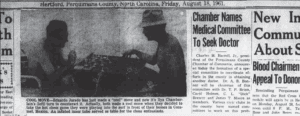


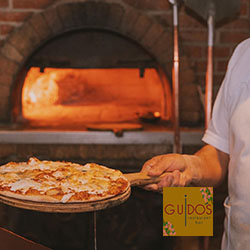


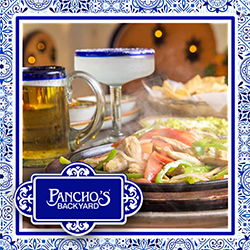

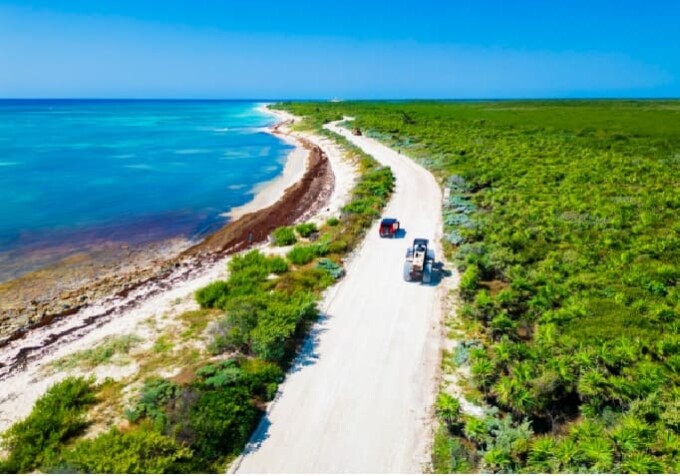
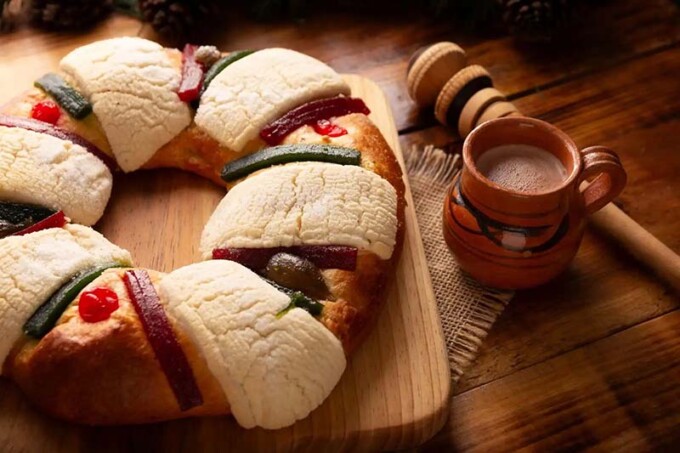
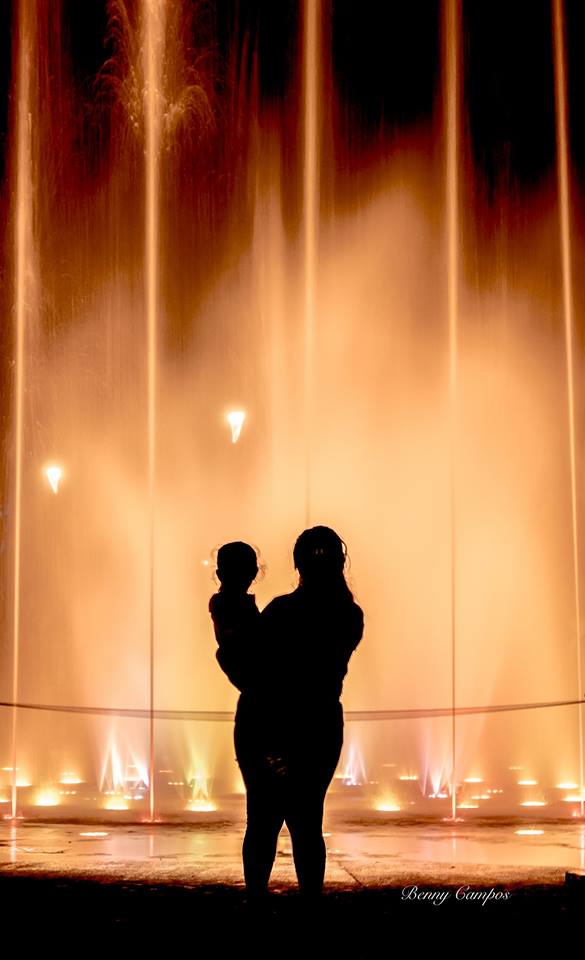
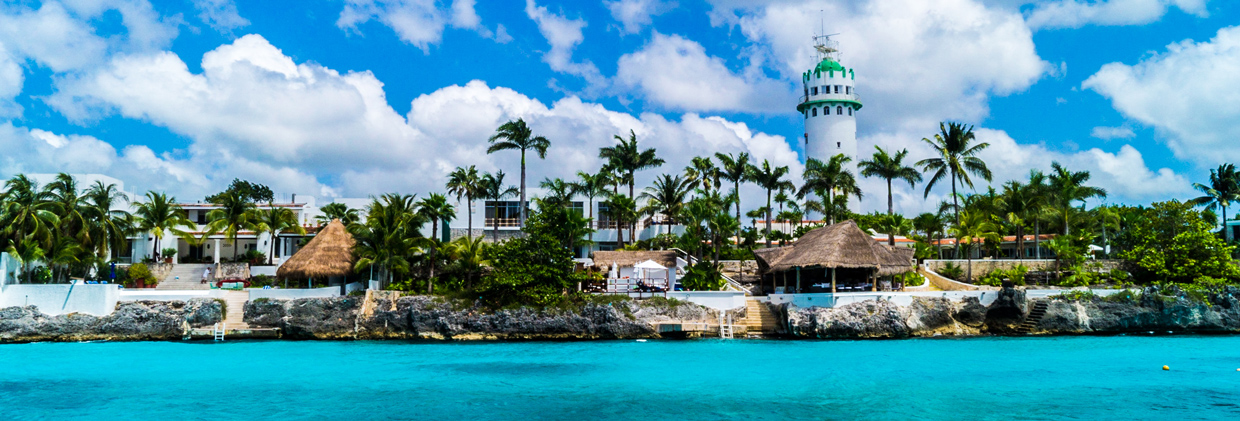
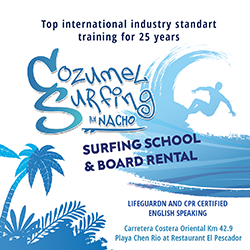



El libro La verdadera historia de Cozumel también esta disponible en español en Amazon.com o con Raymundo en Corazon Contento.